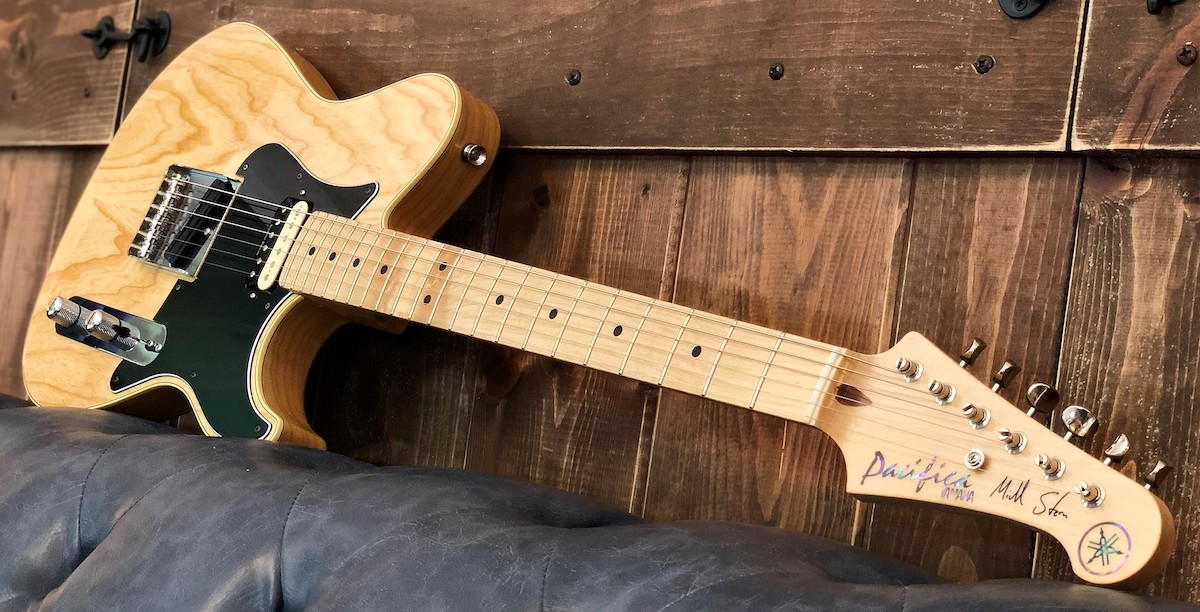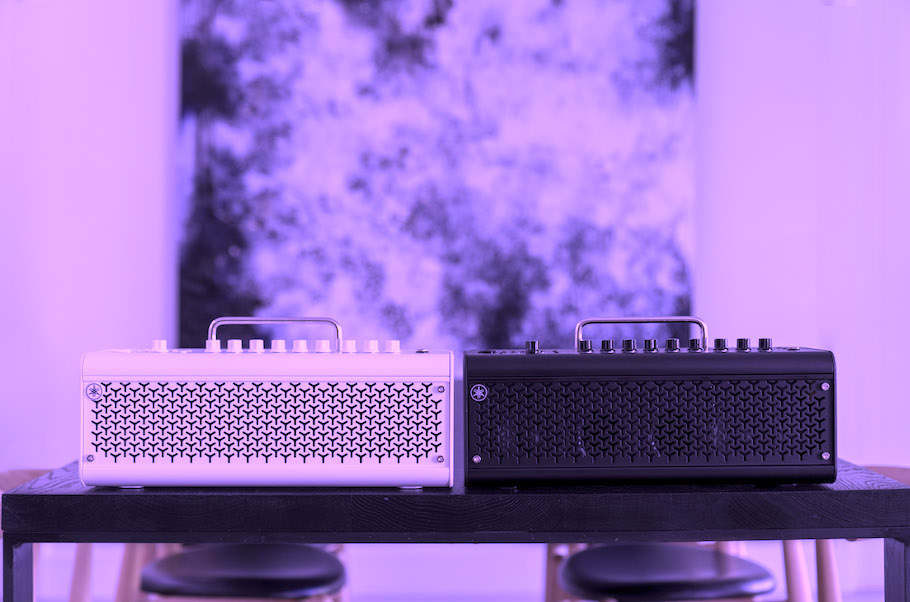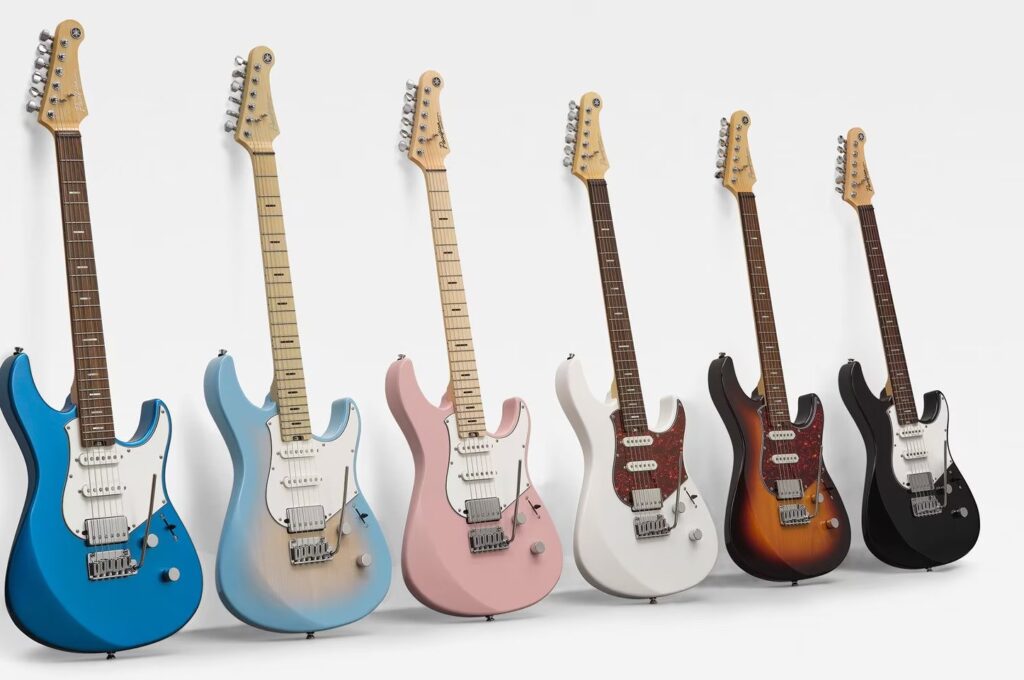Twin Lead Guitars
Add this classic rock sound to your solos.
The blessing and curse for guitar players is that we have so many techniques and improvisational tools to choose from. Making a decision on what to play comes down to experience, taste and making sure we are honoring the song — and not ourselves — first.
When recording solos for my own projects, I tend to spend way too much time perfecting the nuances and second-guessing my decisions … that is, unless I have a deadline. When I work with a client or producer, I defer to them for choosing the final take, and when they’re happy, I lift the brush off the canvas and move on.
As many of you know, one of my favorite melodic devices is to create simple motifs (short melodic phrases) and develop them into a complete solo section. I often enhance those phrases with a close harmony part or two on top of the melody — the “twin lead” approach taken by so many great bands from the ’70s like the Allman Brothers, Boston and Thin Lizzy — to make the lines really stand out. This is also a great way to build a solo towards a natural crescendo.
Start with the Scale
The process of adding a harmony to a guitar solo is very much the same as adding one to a vocal line. To illustrate, let’s harmonize a C major scale, which consists of the following series of seven notes:
C – D – E – F – G – A – B – C
We build the first chord of this scale by stacking every other tone, as follows:
Root Major Third Perfect Fifth Major Seventh
C – D – E – F – G – A – B – C
We can play these four tones together as a Cmaj7 chord, or as separate tones played or sung by four musicians. Playing them as separate tones within the context of a melody will add texture and dynamic expression, as well as subtle pitch and phrasing variation between the four performances.
To hear how this works, take a listen to the audio clip below. I started by recording one octave of the C major scale. Then I played it again, this time going from the third note (E) up to the E an octave higher. Finally, I recorded both scales together. This produces close harmonies a third above the original scale tones, with a nice mixture of major and minor thirds within the seven tones.
You can continue building the harmony by adding a fifth above the original melody (this will be a third above the third). Simply play back your recording of the original C major scale along with the harmony part you just added. Then play the C major scale again directly over the other two melodies, this time starting on the fifth (G) up to the fifth an octave higher. As you can hear from this audio clip, the result is beautiful three-part harmony.
Now let’s discuss how to approach adding harmony to a lead guitar solo that contains non-linear scale tones — in other words, a real melody with a variety of intervals.
Move on to the Melody
To demonstrate how this works, let’s assume that the following series of C major scale tones are being used as an original melody:
A – C – D – E – F – G – E
To add a second lead guitar part above this melody, simply find the third (from the same scale) above each of the original tones, as follows:
A – C – D – E – F – G – E (original melody)
C – E – F – G – A – B – G (harmony in thirds above the melody)
You can then add another harmony part a fifth above the melody by starting it on the third above the third:
A – C – D – E – F – G – E (original melody)
C – E – F – G – A – B – G (harmony in thirds above the melody)
E – G – A – B – C – D – B (harmony in fifths above the melody)
If you analyze the stack of tones that result, you’ll find that they yield the following series of chords:
Am – C – Dm – Em – F – G – Em
Here’s what it sounds like:
I’ve restricted this to close harmonies to illustrate the concept, but you can of course further expand this into adding sixths, fourths, etc. as your harmonic knowledge and curiosity deepens. In the video below, you’ll hear me play a simple melody and then use each harmony part as its own melodic phrase. This is a great way to create new melodies!
Phrasing
When applying harmony parts, focus on precisely duplicating the phrasing from the original melody line. If you don’t use the same phrasing, your harmonies won’t sound locked-in and tight.
Since you want the harmony parts to be exact replicas of the melody from both a rhythmic and melodic standpoint, I’d advocate replicating the note durations and values too. If you bend any of the tones, try to articulate the bend in the harmony part to match the pitch and bend of the original part.
Oh, and here’s a mixing tip: If you play harmonies above the melody, the frequencies of those parts will be higher in pitch, and as a result will sound more pronounced. Consider mixing these parts slightly lower in volume to blend them into the main melody.
The Video
In this video, I play an original melody over a chord progression and then create new melodies from harmony parts, which are then stacked as twin (and, in some cases, three) lead guitar parts. I also break down the chords, describe how to find harmonies and talk about the Yamaha Mike Stern Signature guitar I’m playing:
The Guitar

The Yamaha PAC1611MS Mike Stern Signature Pacifica is a great-sounding single-cutaway solid-body electric with a scale length of 25-1/2″. It features a two-piece light ash body, a one-piece maple neck with 22 medium jumbo frets and a 7-1/4″ fretboard radius. (Click here for more information about these terms.) Its unique headstock features a bone nut, Gotoh tuners, Mike Stern’s signature and gorgeous abalone inlays.

Both pickups are Seymour Duncan® humbuckers. There’s a ’59 PAF style in the neck position, which, in my opinion, creates some of the best guitar tones I’ve ever heard. The bridge pickup is a hot-rails humbucker with plenty of punch for rock and blues.
The Wrap-Up
Learning the fundamental aspects of harmony and theory from within major scale patterns will take you on a journey of discovery for both rhythm and lead guitar applications. Simple motif-based melodies can really shine when layered with one or two additional harmonies … and we can use those higher guitar parts as independent melodies within a solo too.
Photographs courtesy of the author.
Check out Robbie’s other postings.
Click here for more information about the Yamaha Mike Stern Signature Pacifica guitar.















